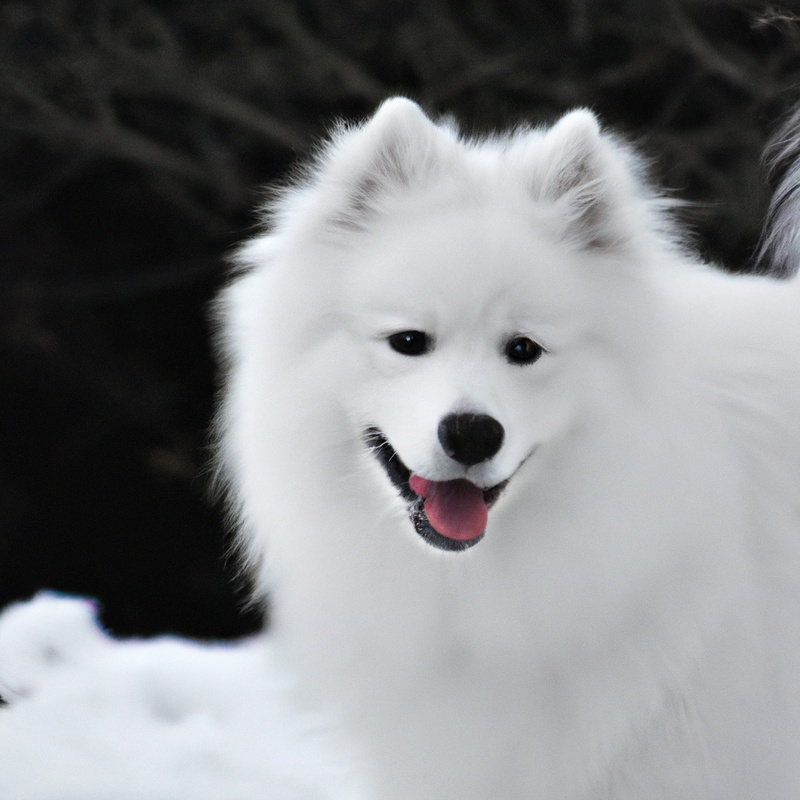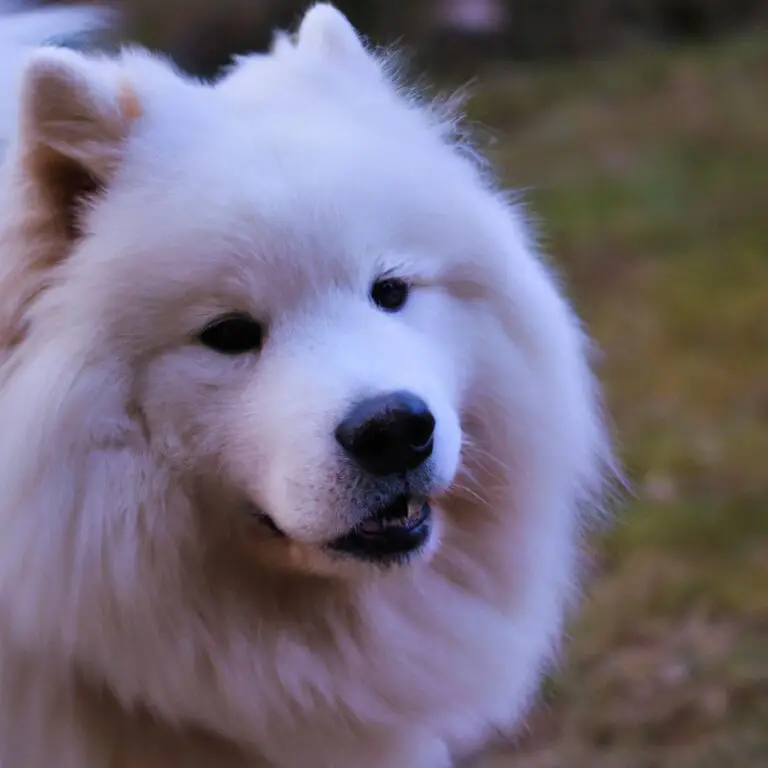Can Samoyeds Be Trained For Protection Work?
Key Takeaways:
- Samoyeds can be trained for protection work, but it is not their natural instinct.
- Proper socialization and training from a young age is crucial for Samoyeds to excel in protection work.
- Samoyeds may require additional time and patience compared to other breeds when it comes to protection training.
- While Samoyeds can be trained for protection work, their friendly nature and tendency to be vocal may affect their effectiveness as guard dogs.
Are Samoyeds really cut out for protection work?
It’s a question that often sparks curiosity in dog enthusiasts.
As an expert in canine training, I’ve seen the incredible potential of these fluffy white snowballs when it comes to protection work.
In this article, I’ll dive into the world of Samoyed training, exploring their suitability for protection work, the key factors to consider, and effective techniques for training these gentle giants.
So, if you’re wondering whether your Samoyed can pull off the role of a tough protector, stay tuned and let’s find out together!
| Question | Answer |
|---|---|
| Can Samoyeds be trained for protection work? | Yes |
Training Samoyeds for Protection Work
Overview of Protection Training for Dogs
Protection training for dogs involves teaching them to guard and protect people or property. It focuses on developing their instincts and abilities to respond to potential threats.
Dogs are trained to bark, growl, or take physical action to deter intruders.
The training includes obedience commands, bite work, and scent detection. It is important to choose the right breed and start training at a young age.
Socialization, consistency, and positive reinforcement are key for effective protection training.
Regular practice and ongoing reinforcement help maintain the dog’s skills and ensure their effectiveness in real-life situations.

Basic Obedience Training for Samoyeds
Basic obedience training is essential for Samoyeds. Start with commands like sit, stay, and come.
Use positive reinforcement, such as treats and praise.
Be consistent and patient during training sessions. Practice short sessions multiple times a day.
Use a firm yet gentle tone when giving commands.
Socialize your Samoyed with other people and animals. Focus on building a strong bond and trust with your dog.
Regular training and reinforcement will help your Samoyed become well-behaved and obedient.
Building a Strong Bond with Your Samoyed
Building a strong bond with your Samoyed is key to a happy and harmonious relationship. Here are a few ways to do just that:
- Spend quality time together: Regularly engage in activities that you both enjoy, such as going for long walks or playing games.
- Positive reinforcement: Use rewards and praise to encourage good behavior and reinforce the bond between you and your Samoyed.
- Training sessions: Enroll your Samoyed in obedience training classes to improve communication and build trust.
- Grooming rituals: Regularly groom your Samoyed, as it not only keeps them looking good but also strengthens the bond through physical touch.
- Socialize your Samoyed: Expose them to different environments, people, and other animals to build their confidence and deepen your connection.
Remember, building a strong bond takes time and effort. But with patience and consistency, you’ll create a lasting and satisfying connection with your Samoyed.

Evaluating Samoyeds for Protection Work
Assessing Samoyed Temperament and Drive
Assessing Samoyed temperament and drive is vital when considering their suitability for protection work. Look for traits like confidence, fearlessness, and a strong protective instinct.
A well-rounded Samoyed should possess a balance between being friendly and approachable, yet also alert and capable of assessing threats.
Assess their drive by observing their energy levels, willingness to work, and ability to focus and follow commands. Interact with them regularly to gauge their responsiveness and trainability.
Consulting with experienced trainers can provide valuable insights during the assessment process.

Working with a Professional Trainer for Evaluation
Working with a professional trainer is essential when evaluating your Samoyed for protection work.
They have the expertise and experience to assess your dog’s temperament, drives, and potential.
A professional trainer will conduct various tests to determine if your Samoyed has the necessary qualities for protection work.
They will also provide guidance on training techniques and exercises to further develop your Samoyed’s skills.
Remember, a professional trainer is your key resource in evaluating and preparing your Samoyed for protection work.
Tips for Effective Protection Training of Samoyeds
Establishing Leadership and Dominance
Establishing leadership and dominance is fundamental when training a Samoyed for protection work. One way to establish leadership is through consistent and clear communication.
Set boundaries and rules for your Samoyed, and ensure that they understand and follow them.
Be confident and assertive, as dogs respond well to strong leadership. Show your Samoyed that you are in control by practicing commands and obedience exercises regularly.
Provide positive reinforcement and rewards for good behavior to reinforce your position as the leader.
Socialization and Exposure to Different Environments
Socialization and exposure to different environments are essential for training Samoyeds for protection work. It helps them become comfortable and confident in various situations and around different people.
By introducing them to new places, people, and animals from an early age, you can help them develop appropriate social skills and reduce fear or aggression.
Taking them to new locations, such as parks or busy streets, and exposing them to different noises, smells, and experiences will broaden their horizons. Regular socialization and exposure will make them well-rounded and adaptable dogs.
Positive Reinforcement Techniques for Samoyeds
Positive reinforcement is highly effective when training Samoyeds. Here are a few techniques to consider:
- Use treats: Reward your Samoyed with small, tasty treats for desired behaviors, such as sitting or staying.
- Verbal praise: Use a positive, upbeat tone to praise your Samoyed when they exhibit good behavior.
- Toys as rewards: Samoyeds love to play, so using toys as rewards can be a great motivator during training sessions.
- Clicker training: Pairing a clicker sound with treats helps reinforce behaviors and allows for precise timing.
Remember, consistency and patience are key when training your Samoyed using positive reinforcement techniques. Happy training!
Challenges and Considerations of Training Samoyeds for Protection Work
Samoyed Temperament Challenges in Protection Training
Training Samoyeds for protection work can present some unique temperament challenges. One challenge is their friendly and sociable nature, which may make it difficult for them to exhibit the assertiveness and seriousness required for protection work.
Additionally, their independent and stubborn streaks can make them resistant to obedience commands.
Patience, consistency, and positive reinforcement training methods are key to overcoming these challenges. Gradual desensitization to stimuli and exposure to different environments can help build their confidence.
It’s important to remember that not all Samoyeds are suitable for protection work, as temperament varies among individuals.
Potential Physical Limitations for Samoyeds
Samoyeds, while known for their friendly and affectionate nature, may have some physical limitations when it comes to protection work. Due to their size and build, they are not as intimidating as other larger breeds.
Additionally, their fluffy coat may hinder their ability to effectively maneuver.
It’s important to consider these limitations before attempting to train a Samoyed for protection work. However, with proper training and socialization, they can still serve as excellent family companions.
Assessing the Practicality of Training Samoyeds for Protection Work
Assessing the practicality of training Samoyeds for protection work depends on various factors. Firstly, while they are known for their friendly nature, Samoyeds may not possess the innate protective instincts of certain breeds.
However, with the right training and socialization, some Samoyeds can excel in protection tasks.
Secondly, their friendly disposition might make it harder for them to discern between friend and foe initially. Thirdly, their size and appearance may not be as intimidating as other guard dog breeds.
Nevertheless, with dedicated training, consistent reinforcement, and early exposure to different environments and situations, Samoyeds can be trained to provide a level of protection.
It is important to remember that every dog is different, so individual temperament, genetic predisposition, and proper socialization are crucial aspects to consider.
Frequently Asked Questions
Are Samoyeds Naturally Protective?
Samoyeds are not naturally protective dogs.
Originally bred to work alongside humans in herding reindeer and pulling sleds, Samoyeds have a friendly and gentle nature.
They are known for their sociability and love for people, including strangers.
While they may alert you to any unusual activity, they are not likely to exhibit guarding or protective instincts.
However, proper training and socialization can help them develop some basic protective behaviors.
It’s essential to remember that temperament can vary among individual dogs.
Can Samoyeds Be Aggressive?
Can Samoyeds be aggressive?
Generally, Samoyeds are a friendly and gentle breed.
However, like any dog, individual temperaments can vary.
While aggression is not a common trait in Samoyeds, certain factors such as lack of socialization, fear, or mistreatment can contribute to aggressive behavior.
Proper training, socialization, and a loving environment play a key role in shaping a Samoyed’s behavior.
It is important to always remember that each dog is unique, and early intervention and professional guidance should be sought if any signs of aggression arise.
How Long Does it Take to Train a Samoyed for Protection Work?
Training a Samoyed for protection work can vary in duration depending on factors such as the dog’s individual temperament, previous training experience, and the consistency of the training. Generally, it can take several months to a year or more to train a Samoyed for protection work.
It’s important to work with a professional trainer who understands the unique traits and needs of the Samoyed breed, as well as to be patient, consistent, and persistent in the training process.
Regular training sessions and ongoing reinforcement of commands are crucial for success.
Final Verdict
Samoyeds can indeed be trained for protection work, although it requires careful evaluation and training.
By starting with basic obedience training and building a strong bond, Samoyeds can be developed into reliable protectors.
It is important to assess their temperament and work with professional trainers for evaluation.
To be effective, establish leadership and dominance, provide socialization, and use positive reinforcement techniques.
However, challenges such as temperament issues and physical limitations should be considered.
Ultimately, with the right approach, Samoyeds can excel in protection work, but it requires dedication and expertise.







